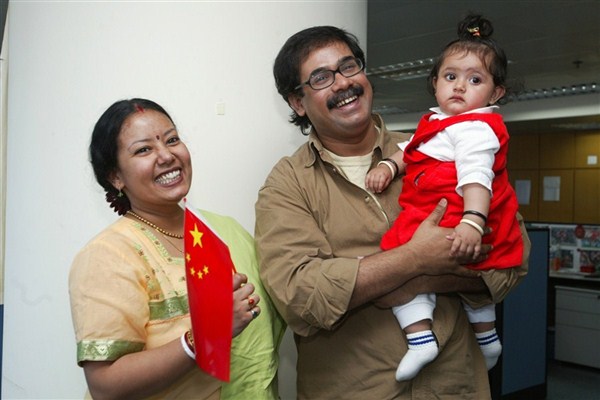今日上海
上海日报外籍专家喜获“白玉兰纪念奖” - 2014年09月05日
Journalist honored after short-term job lasts 15 years

WINNING the Magnolia Silver Award caps a journey that started way back in September 1999. It was supposed to be a short-term assignment of just couple of months, but destiny clearly had other ideas for me.
China, particularly Shanghai, was slowly showing up on the world economic map and its business leaders spotted a market for a foreign-language newspaper. The idea was to connect Shanghai with the rest of the world, while reaching out to the burgeoning expat community here.
In the hectic days that followed my arrival, a motley group of locals and “foreign experts” chased that dream, eventually realizing it on October 1, 1999, when Shanghai Daily became the city’s first official English-language paper, 50 years after the founding of the People’s Republic of China.
That launch was also the start of a long innings in the city for me, a time during which I found a bit of India in the hidden pockets of Shanghai.
A chance discovery of a plaque in a quiet lane in Siming Village opposite the Shanghai Exhibition Center caught my eye. The inscription, written in English, read: Rabindranath Tagore (1861-1941) (Indian poet, litterateur).
The revered Indian Bard — Asia’s first Nobel laureate — was listed on the wall alongside a host of celebrated Chinese personalities.
It was obvious the shortcut I had taken had a tinge of history. I returned the next day with a colleague, Shanghai Daily’s book reviewer Xu Qin, to dig into the past, and so we embarked on a road of literary adventure.
Fascinating tale
The next several months were spent glued to the city’s archives and in Shanghai Library, meeting academics and writers who threw light on Tagore’s engagement with China in the 1920s and his lifelong friendship with Chinese poet Xu Zhimo.
The fascinating tale of two poets was told in my short documentary, “Gurudev: A Journey to the East.”
Some of Tagore’s quotations in Chinese still adorn the neighborhood’s community walls, and on somber days they spark the emotions of creativity.
While researching Tagore, we hit on another chance finding — an early 20th Century gurdwara, or Sikh temple, in Shanghai’s northeast Hongkou District. The red-walled structure, dwarfed by the new high-rise complexes and overhead Metro Line 3, is now home to several Chinese families, while its compound houses a health clinic. It is the only remnant of the Indian Sikh legacy in the city.
Known to locals as Yindu Miao (Indian temple), it’s a miracle it survived the bombing during China’s War of Resistance against Japanese Aggression (1937-45). It stands today protected as an immovable cultural relic.
That this city is rich in history is well-documented, but unearthing its treasures ultimately made for a truly rewarding experience.
